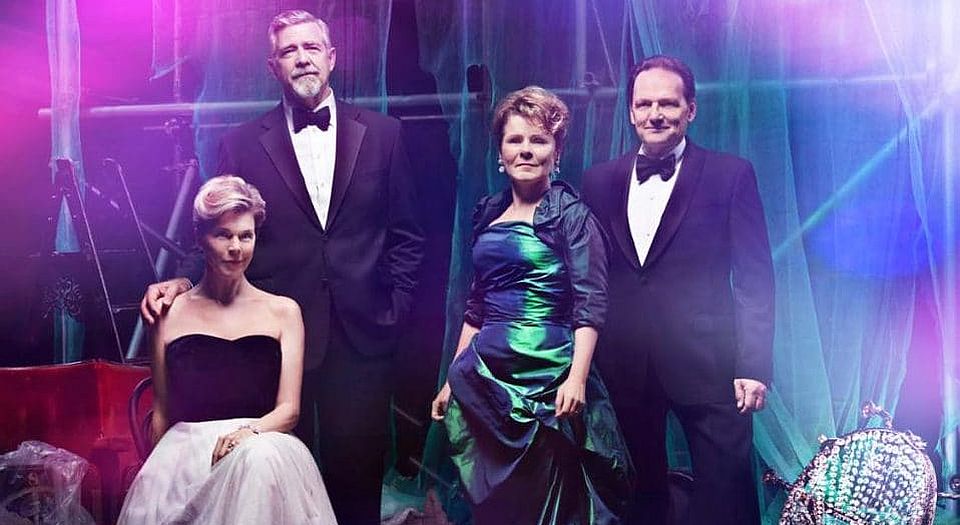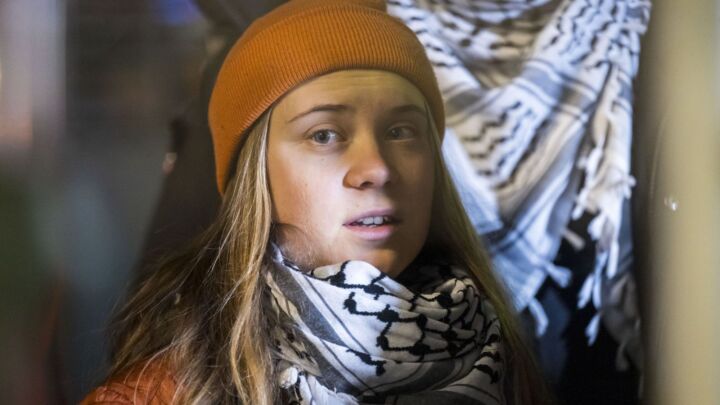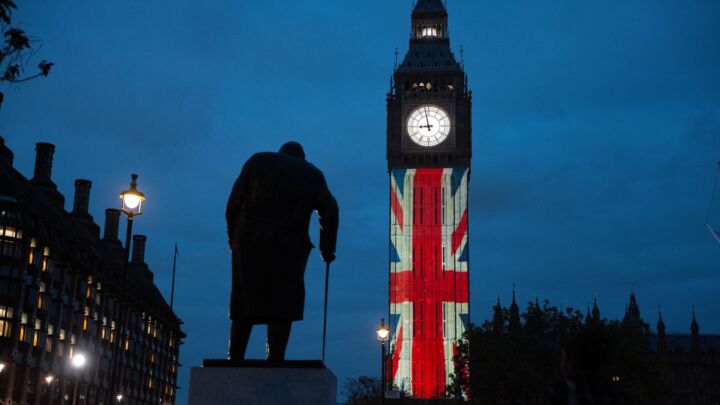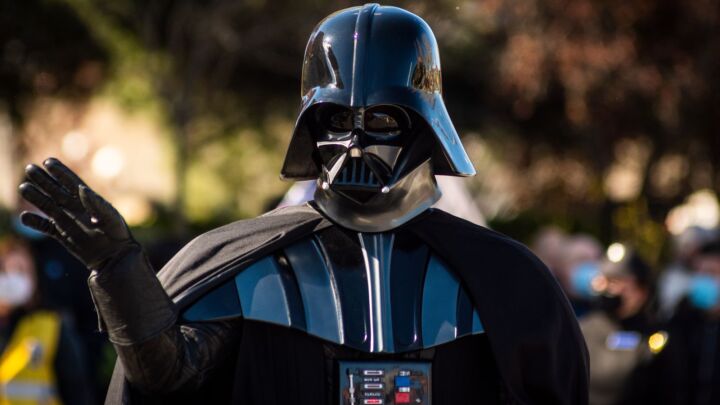Follies: sorrow and spectacle
The Sondheim show has finally got the London run it deserves.

Want to read spiked ad-free? Become a spiked supporter.
A new revival of Follies, the 1971 cult musical with songs by Stephen Sondheim, is playing at the National Theatre. The show is inspired by the real-life Ziegfeld Follies, elaborate stage revues mounted by Broadway showman Florenz Ziegfeld in the early 1900s. In Follies, the performers of the Weismann Follies reunite decades after their glory days for a party at their former theatre, which is about to be demolished. While featuring a large ensemble, the show focuses on two particular Weismann Girls and their husbands. The entire cast is haunted by ghostly apparitions of their past selves, played by younger actors.
Follies is both Stephen Sondheim’s most pessimistic and spectacular show. Throughout the evening, the various Follies perform their old numbers, classics like ‘I’m Still Here’ and ‘Broadway Baby’. They’re all pastiches of the Golden Age of Broadway, but their lyrics are often mournfully ironic – the actresses are not ‘Broadway Babies’ anymore. Sondheim uses the shallow sentiment and optimism of this era of Broadway as a metaphor for the hollowness of the characters’ lives. If this demanding one-act show has an arc, it’s about abandoning delusions (or follies) and accepting the crushing reality of one’s decisions in life.
When Follies was first produced in the West End in 1987, it was revised to give it a more optimistic tone, at the behest of producer Cameron Mackintosh. This sumptuous revival at the National Theatre, however, restores the gloom of James Goldman’s original book without losing any of its spectacle. Dominic Cooke’s impeccable staging has tremendous detail. The crumbling walls of the abandoned theatre dominate the revolving stage, and the ghostly apparitions of the young Follies appear in the distance.
Much of the show concerns itself with the ‘follies’ of the individual characters. They get more and more drunk as the show progresses, and the tone shifts from one of warm nostalgia to demented terror. Realising the profound mistakes they’ve made in their lives and relationships, the characters have a sort of collective nervous breakdown in the last half hour, resulting in the famed ‘Loveland’ sequence. The run-down theatre magically transforms into how it was in its Broadway prime. The stage is filled with a huge chorus of garishly dressed young actors, and the main characters each do a big production number, relating their deepest desires in the most gaudily Broadway way possible.
The cast is led by outstanding performances from West End greats Imelda Staunton, Janie Dee and Philip Quast. But the minor players truly shine in their featured performances, with Dawn Hope leading the tap number ‘Who’s that Woman?’, famed soprano Dame Josephine Barstow performing the moving ‘One More Kiss’, and Tracie Bennett singing the almighty ‘I’m Still Here’.
While Sondheim revivals have been a constant presence in London for many years, they’re usually put on in smaller off-West End venues. It’s fantastic, then, that Follies is getting the large orchestra and opulent staging it deserves.
Christian Butler is a spiked columnist. Follow him on Twitter: @CPAButler
Who funds spiked? You do
We are funded by you. And in this era of cancel culture and advertiser boycotts, we rely on your donations more than ever. Seventy per cent of our revenue comes from our readers’ donations – the vast majority giving just £5 per month. If you make a regular donation – of £5 a month or £50 a year – you can become a and enjoy:
–Ad-free reading
–Exclusive events
–Access to our comments section
It’s the best way to keep spiked going – and growing. Thank you!






Comments
Want to join the conversation?
Only spiked supporters and patrons, who donate regularly to us, can comment on our articles.